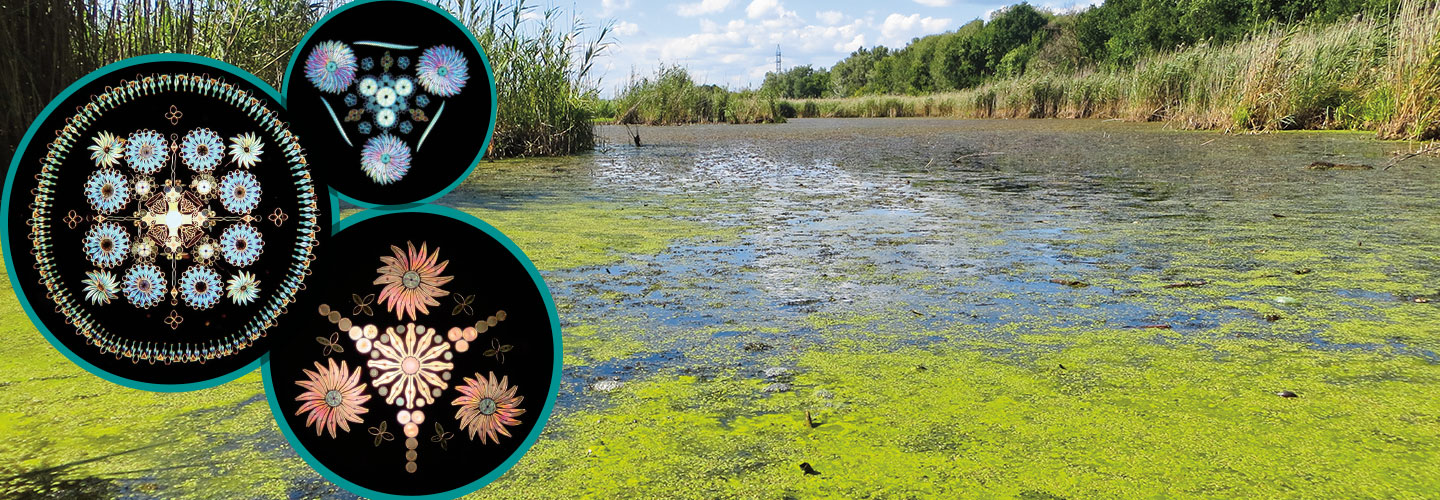When you pass a muddy puddle, you probably avoid it. But an English artist named Klaus Kemp seeks out puddles and other bodies of water to hunt down a special type of algae. He then transforms the algae into works of art. The finished product looks like stained glass, but is so tiny that it can only be seen through a microscope!
The building blocks of Kemp’s artworks are diatoms, a kind of single-celled algae. Diatoms make up the bottom of the food chain in both saltwater and freshwater environments. Like plants, they use sunlight to create energy. Other animals eat diatoms.
What makes diatoms perfect for Kemp is that they make and live in microscopic houses of silica, or glass. The silica shells stay intact after the diatoms die. Diatoms come in different shapes, including stars, triangles, and circles.
You probably avoid muddy puddles. But Klaus Kemp seeks them out. He's an artist who lives in England. Kemp looks through puddles and other bodies of water to find a special type of algae. He then turns the algae into works of art. The final product looks like stained glass. But it’s so tiny that it can be seen only through a microscope!
The building blocks of Kemp’s artworks are called diatoms. Diatoms are a type of algae. They live in both saltwater and freshwater. Diatoms are the bottom of the food chain. They use sunlight to create energy just like plants do. Other animals eat diatoms to survive.
Diatoms make and live in microscopic houses of silica, or glass. After the diatoms die, the silica shells are left over. This makes them perfect for Kemp’s art. Diatoms come in different shapes, like stars, triangles, and circles.

